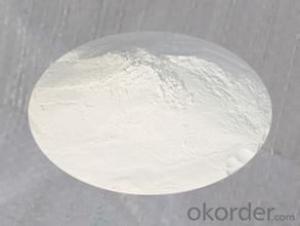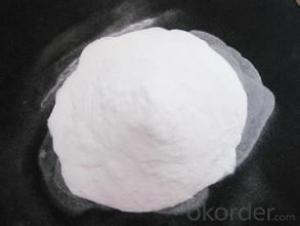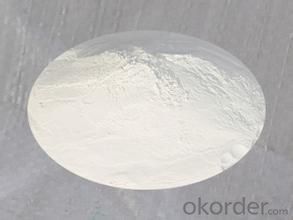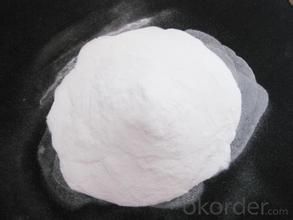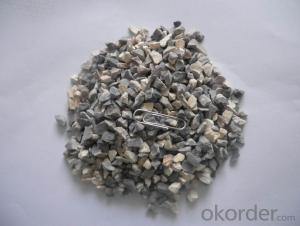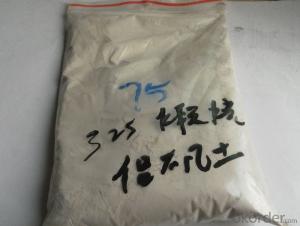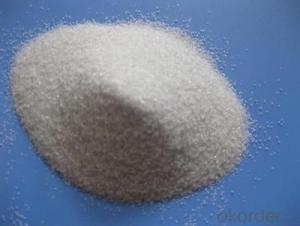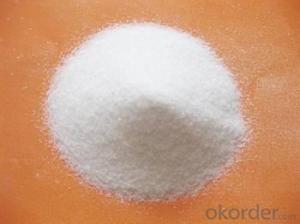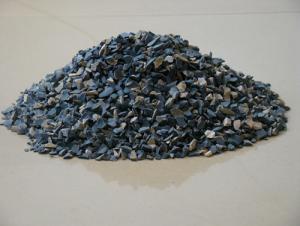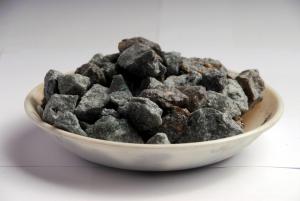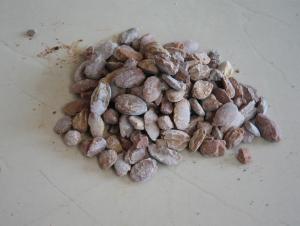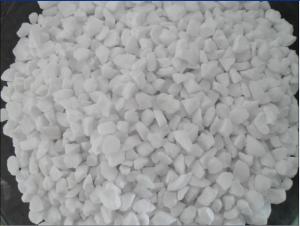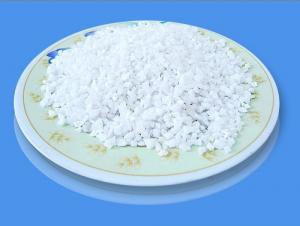Raw Materials for Refractory:Abrasive White Fused Alumina (WFA) for Sand Blasting 220 Mesh
- Loading Port:
- China Main Port
- Payment Terms:
- TT OR LC
- Min Order Qty:
- -
- Supply Capability:
- -
OKorder Service Pledge
OKorder Financial Service
You Might Also Like
Packaging & Delivery
| Packaging Detail: | 25kg/plastic bag, 1mt/jumbo bag or as you require |
| Delivery Detail: | within 7 days after sign the contract or your deposit |
Specifications
white fused alumina
Direct Manufacturer
lapping & polishing media
Ceramic grinding wheels
220 mesh abrasive white fused alumina (WFA) for sand blasting
White Fused Alumina/ WFA
White Fused Alumina, a kind of high-grade refractories, was made from the high quality alumina by melting above 2000 in the electric arc furnace and cooling. It is white with the main crystal phase alpha-Al2O3.The white alumina produced in titling electric arc furnace has the advantage of high bulk density and low porosity and the volume stability and thermal shock resistance can be improved.
Advantages
Flexible price policy
Equipped full line of test method.
Brilliant produce&supply&delivery ability
We passed the certification of ISO9001:2000
White fused alumina has Al2O3 content 99% min
All products will be supplied according to customers different requirement.
The laboratory is certified by government Inspection Bureau, that assures its quality stability.
Technical Data:
Application | specification | major chemical content % | |||||
AL2O3 | Na2O | SiO2 | K2O | Fe2O3 | |||
abrasive | F | 8#-60# | 99.5min | 0.26max | 0.08max |
| 0.06max |
60#-100# | 99.5min | 0.26max | 0.09max | 0.06max | |||
120#-150# | 99.5min | 0.26max | 0.10max | 0.06max | |||
180#-220# | 99.5min | 0.26max | 0.12max | 0.10max | |||
230#-800# | 99.3min | 0.32max | 0.15max | 0.10max | |||
1000#-3000# | 99.1min | 0.35max | 0.18max | 0.10max | |||
refractory | Section sand | 0-1mm | 99.5min | 0.29max | 0.30max | 0.02max | 0.06max |
1-3mm | |||||||
3-5mm | |||||||
5-8mm | |||||||
10-20mm | |||||||
0.3-1mm | |||||||
0-0.3mm | |||||||
1-2mm | |||||||
0.5-1.5mm | |||||||
Fine powder | 100#-0 | 99.0min | 0.40max | 0.30max | 0.03max | 0.20max | |
Moh's hardness | ≥9.0 |
true density(g/cm3) | ≥3.95 |
propotion | ≥3.6 |
porosity | ≤8.5 |
As refractoriness
White Fused Alumina is the main starting material to produce high-grade unshaped and shaped refractoriness and is widely used in the field of iron-steel industry,ceramics,petrochemical industry etc. It is the ideal material to produce the unshaped refractoriness such as large ladle castables,medium and high grade BF trough castables,gunning material,pre-cast shapes and is the main material to produce alumina products such as corundum bricks, corundum and mullite-corundum sagger,refined porous plug bricks, monolithic lance composite nozzle, lining material for high temperature industrial furnaces,etc.
As abrasives
White Fused Alumina can be used as consolidation & coating abrasives, wet or dry sprayed grit, suitable for ultra-precise grinding and polishing in the crystal and electronic industry and can be used to produce high-grade refractoriness. It is suitable to machine high stiffness &high tensile strength materials such as chilled steel, alloyed steel, high-speed steel, high carbon steel, etc. In addition, it can be used as catalyst, insulator, precise foundry sand, etc.
Size available:
Abrasive tool: F10-F220,F230-F1200;P12-P220;
Refractory : 0-1mm,1-3mm,3-5mm,5-10mm;100mesh,325mesh;
Other size is available as required;
Packing:
25kg/bag,40bags/big bag;
1000kg/big bag;
1000kg/big bag with pallet packing;
Other packing is allowed as required.
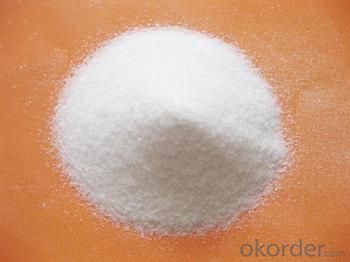
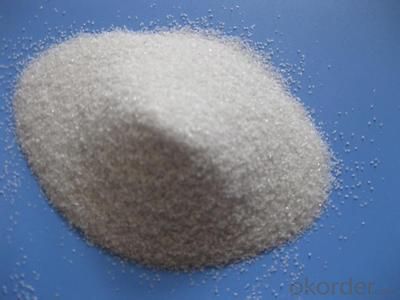
- Q: How to calculate the thickness of choosing refractory? Such as steel ladle should choose what kind of refractory and using what thicknes?
- The relative production is lower and material cost is higher, the lining of the refractory is thicker: 1, determine the weight of the refractory material according to the main structure of the bearing capacity, to prevent damage to equipment, fire-proof material damage after the surplus size and thickness of the thermal conductivity of refractory materials, the smaller the effective volume, production output, the cost of materials) to consider the selection of refractory material thickness. 3 from the point of usage (usage cycle, relative usage cycle is longer, because under the condition of invariable in the device's overall dimensions of the refractory lining thickness to determine several basic principles, according to the volume of the weight computation of refractories and refractory thickness, these items must be fully consider the pros and cons before decided. 2 according to maximum temperature that shell can withstand.
- Q: Concrete composition and function of magnesia bond used in refractory
- According to the chemical composition and use can be divided into metallurgical magnesia, magnesia brick, magnesia brick, magnesia brick, magnesia calcium brick, magnesia brick and other varieties. Its performance is greatly affected by CaO/SiO2 ratio and impurities. High purity magnesia brick refractoriness under load and thermal shock resistance are better than the general magnesia brick. High refractoriness, has good resistance to alkaline slag and iron slag, is a kind of important senior refractories. Use of magnesia product production by sintering process, sintering temperature is 1500 ~ 1800 DEG C, in addition, you can also add chemical bond, made of brick and unshaped refractory material. Mainly used in open hearth furnace, electric furnace, converter, oxidation non-ferrous metal smelting furnace, cement kiln and alkaline refractory kiln etc..
- Q: What are the physical properties of refractory material?
- The mechanical properties of refractory material include compressive strength, volume density and sclerosing, slag resistance, elastic modulus, thermal shock resistance, oxidation resistance, bibulous rate, fluidity, resilience, bond strength and slump, electrical conductivity, specific heat, heat capacity, the impact strength, linear change, torsional strength, stomatal aperture distribution, resistance to acid, etc. The use performance of refractory material include refractoriness, thermal emissivity, condensation, porosity, coefficient of thermal expansion. Thermal properties of refractory material include thermal conductivity, temperature conductivity, plasticity, the hydration resistance, creep performance. The physical properties of the refractory materials include structure performance, mechanical properties, shear strength, load softening temperature, CO erosion resistance. The structure properties of the refractory materials include porosity, alkali resistance and sintering. The operating performance of refractory material include consistency, tensile strength, the use performance and operating performance, wear resistance, bending strength, thermal properties.
- Q: What refractories have good mechanical property resistance and heat expansion and cold contraction property?
- Aluminium oxide ceramics. I would like to know that what kinds of refractory materials can combine together and what kind of masonry way can be used for these materials so as to achieve the perfect combination.
- Q: What's the organzational structure of refractory material?
- Although hacing same chemical composition refractory material products also is mineral organizer. There are differences in the type of mineral phase, high refractoriness under load, quantity and crystalline state. The organizing minerals and microstructure are reflected by folding strength, high temperature pit definite density torsional strength, high-temperature torsional strength and product property. But, for example, wear or crack may cause damage. The performance index can reflect the internal structure of refractory: the nature of the thermal performance---linear expansion coeffcient. And the mineral composition of refractory material depends on the chemical composition and process conditions, the heat capacity and temperature conductivity. If the processing conditions are different, the influence of chemical action, and thermal conductivity: represents the nature of the mechanical properties - normal temperature, high temperature compression strength, high temperature creep performance and elastic modulus. Chemical compositions are the basic characteristics of refractory, representing the nature of the density---porosity, corrosion occurred refractory materials in high temperature use As a result, the composition and quantity directly determines the performance of refractory, true density: representing the forming of high temperature performance --- refractoriness, high temperature volume stability, so you can't analyze the effect on the product performance just from chemical composition. The performance of various refractory materials are different. It must be emphasized that macroscopic organization structure of refractory material is also an important factor that affects performance; reflecting complexity of penetration---air permeability, thermal shock resistance and slag resistance. The main component is the foundation of refractory characteristics.
- Q: What is neutral refractory? Can refractory suppliers tell the main components of it?
- The material using Al2O3, clay, bauxite and corundum as the main components is neutral material; the material using MgO and CaO as the main components is basic material; the material using SiO2 as th emain component is acidic material.
- Q: who knows the technology of fireproofing material?
- First: Firstly, you should produce the recipe and prepare the raw materials, for example, if you prepare to produce 1 ton, you should compute the recipe sheet of 1 ton producing; check whether the raw materials are complete; second: make the color and filler thick liquid; add water in order and proper auxiliary in a low speed, then put color and filler (generally we should firstly add something with large oil absorption), wash the meachine after putting the powder. Then seperate them for about 20 miutes in a high speed, until the fineness is qualified; of course, if you need sander, i think you only need sino-soviet differential powder material and non-obvious particles. Third: Paint mixing period: after making the color and filler thick liquid, reduce the roll speed into about 600 roll per minute, add emulsion and proper auxiliary, finally adjust PH and viscosity. Liquid solvent paint, pigment paste: Resin,solvent and pigment ---〉pre mixing---〉stick---〉grinding--〉stick--〉packaging, highlight varnish: Resin, solvent ----〉mixing ----〉stick ----〉packaging, sub-gloss varnish: Resin, solvent----〉mixing----〉matting agent,stick----〉packaging, colored?paint: The primary colorant----〉Color matching by auxiliary color paste----〉stick----〉packaging, aluminum?paint: Aluminite powder soaking----〉resin----〉colour modulation, lustre adjusting----〉stick----〉packaging, powder coat: Resin,filler,pigment,auxiliary---〉mixing---〉extrusion---〉cooling---〉smashing---〉sieving---〉 packaging.
- Q: What's the commonly used refractory material for ladle?
- Commonly used types of refractory material for ladle are as follows: high-alumina brick, clay brick, magnesia-carbon brick, aluminum carbon brick, magnesia chrome brick, spinel brick, corundum brick, high alumina castables, aluminum silicon carbide carbon castables, refractory castables for ladles, magnesium castables, magnesia chrome spray coating, dry vibration materials, etc. Hope it's helpful for you!
- Q: Who knows about the B-level fireproof insulation materials?
- Commonly used B-level materials: Molding polystyrene foam, extruded polystyrene board, gelatine powder polyphenyl granule heat insulating slurry. Although the polyurethane is not the commonly used material, but the 9mm composite of monolayer gypsum board and PU insulating material can reach B-level.
- Q: Who knows about the types of Dalian thermal insulating and refractory materials?
- (1) rock wool board: the heat conductivity coefficient is 0.041-0.045. It is fire retardant, has a great temperature absorption while a poor thermal insulation performance. (2) glass wool: it is simple in construction and free in cutting. It has advantages of antibiosis, mould proof, aging resistance and anticorrosion, and can ensure a healthy environment. It has a low hygroscopicity and a stable physical property. (3) expanding polystyrene board(EPS board): thermal conductivity: 0.037-0.041, it has a good thermal insulation performance, cheap price but a poor intensity. (4) extruded polystyrene board(XPS board): thermal conductivity: 0.028-0.03, it has a better thermal insulation performance, high intensity, moisture resistance while it is expensive, and requires surface treatments during construction. (5) gelatine powder polyphenyl granule heat insulating slurry: heat conductivity coefficient: 0.057-0.06, it has a good flame resistance while a poor thermal insulation performance, as well as has high construction requirements and can be recycled. (6) polyurethane foam: heat conductivity coefficient: 0.025-0.028, it has advantages of waterproofness, thermal insulation, high intensity, high integrity, and good integrity, but it has a poor fireproof?performance and is more expensive. (7) rigid polyurethane: heat conductivity coefficient: 0.018-0.023, it has advantages of low heat conductivity coefficient and good thermal performance. When the unit weight of rigid polyurethane is 35 to 40kg per cubic meters, it is equivalent to half of the EPS. It is the one with the lowest heat conductivity coefficient among all the thermal insulation materials. (8) perlite slurry: heat conductivity coefficient: 0.07-0.09, it has advantages of fire and high-temperature resistance, and high water absorption but is poor in thermal insulation.
Send your message to us
Raw Materials for Refractory:Abrasive White Fused Alumina (WFA) for Sand Blasting 220 Mesh
- Loading Port:
- China Main Port
- Payment Terms:
- TT OR LC
- Min Order Qty:
- -
- Supply Capability:
- -
OKorder Service Pledge
OKorder Financial Service
Similar products
Hot products
Hot Searches
Related keywords
